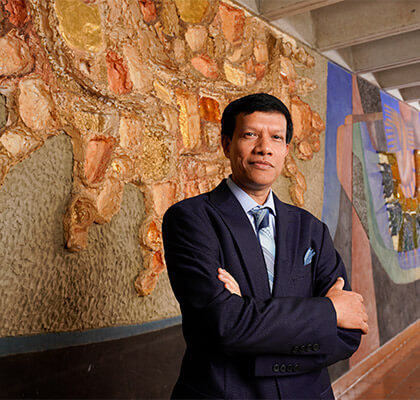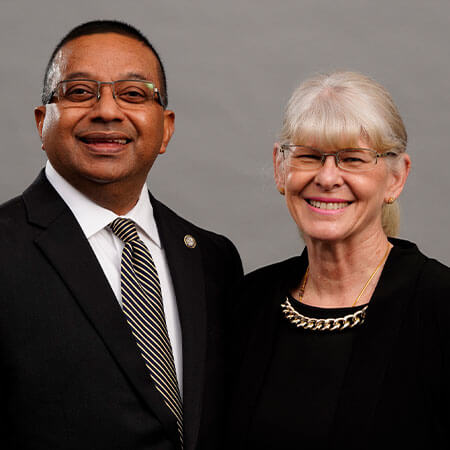Deep discovery
by Alex Z. Salinas (B.A. ’11, M.A. ’19)
In the land before time — well, 140 million years ago — Southwest Texas lay under a warm ocean. During the Cretaceous period — about 60 million years ago — tectonic movements cracked spaces in subterranean rock. Water flowing there slowly carved passages and formations creating the Natural Bridge Caverns.
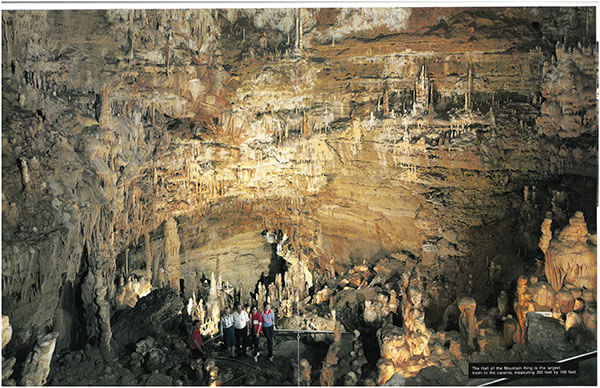
On March 27, 1960 — less than a year before John F. Kennedy became president — four
St. Mary’s University classmates launched their fourth expedition into ranchland owned by the Wuest family.
The students were members of the thrill-seeking, cave-exploring St. Mary’s University Speleological Society.
Orion Knox Jr., Preston Knodell (B.A./B.S. ’60), Al Brandt (B.S. ’59) and Joe Cantu had permission from Clara Wuest Heidemann to search the cave near her family’s cattle ranch.
When the St. Mary’s spelunkers trekked across a previously spotted narrow passageway “plugged with debris” nearly a hundred feet underground, they tapped on Knox, the smallest in the group, to crawl through it.
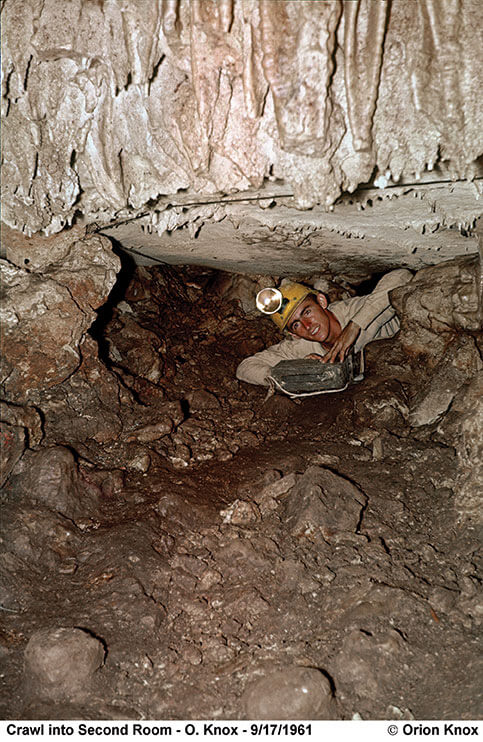
On the other side, when 19-year-old Knox laid eyes on an expanse of darkness — becoming the first human, perhaps, to peer into the largest known caverns in Texas, which now see thousands of visitors every year — he said to the group, “Hey, we may have something here.”
“We’d always known there were passages beneath the area around the sinkhole and bridge, but no one had wanted to explore them before,” Heidemann told Texas Highways magazine in 1988.
In a story by the Austin Chronicle, Knox said that finding the first room, later dubbed St. Mary’s Hall, “was the biggest adrenaline rush of my life.”
Knodell (now deceased) told the Austin Chronicle that discovering the caverns “was the second-biggest moment of my life,” next to getting married.
“It was a really tight fit the entire way,” Cantu said in the Chronicle story. “From the very beginning, Orion said he was going to help open the cave to the world. And he did.”
Knox put his college education on hold for two years to help excavate and develop the caverns, which opened to the public in 1964 and became a registered U.S. natural landmark in 1971.
Upon opening in 1964, then-Governor John Connally called the Natural Bridge Caverns “a jewel in the crown of Texas’ attractions.”
Knox, who eventually graduated from the University of Texas at Austin with a degree in architecture, recalled the minimalistic methods deployed to survey the caverns.
“At the time, we basically just used compass and steel tape,” he said. “Measuring was a complicated, meticulous process.”
Natural Bridge Caverns geologist Brian Vauter said the caverns were “initially discovered with 2.5 miles of passage.”
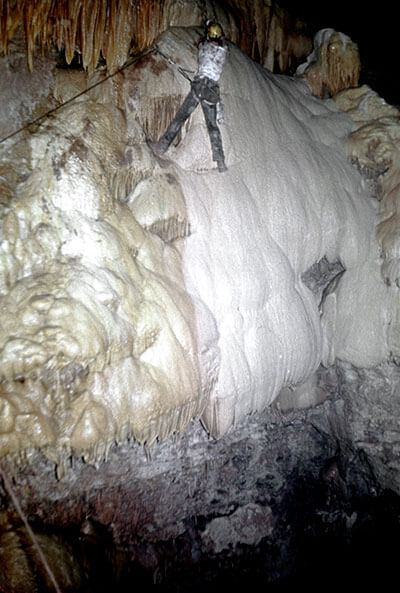
In May 2019, cavers found a 600-foot long passageway beyond where the 1960 exploration stopped. It opened into a space containing mineral-rich water pools and ice-like crystal mounds.
Stalactites, stalagmites, soda straws and flowstones are just some of the types of rock that compose the caverns. Even the jawbones of a grizzly bear that became extinct more than 8,000 years ago have been unearthed inside, pointing to signs of ancient activity.
For Evelynn Mitchell, Ph.D., Professor of Environmental Science, the caverns’ greatest significance lies in its relationship to the Edwards Aquifer.
“The caverns are the best place for the public to experience, to physically witness, the effects of water and rainfall in this region,” she said.
Mitchell, who has published research on the impact of bats in San Antonio’s Bracken Cave, said a clearer understanding of the caverns — and the source of the underground water supply — teaches us not to develop housing in the recharge zone.
After learning geology from the Marianists, Knox, now 79, enjoyed a career of cave planning and development. After Natural Bridge Caverns, some of his stops included Kartchner Caverns State Park in Arizona, Harrison’s Cave in Barbados and Grutas de Bustamante in Mexico.
“Between discovery and later development, Natural Bridge Caverns has impacted almost every aspect of my life, all for the better,” Knox said.




